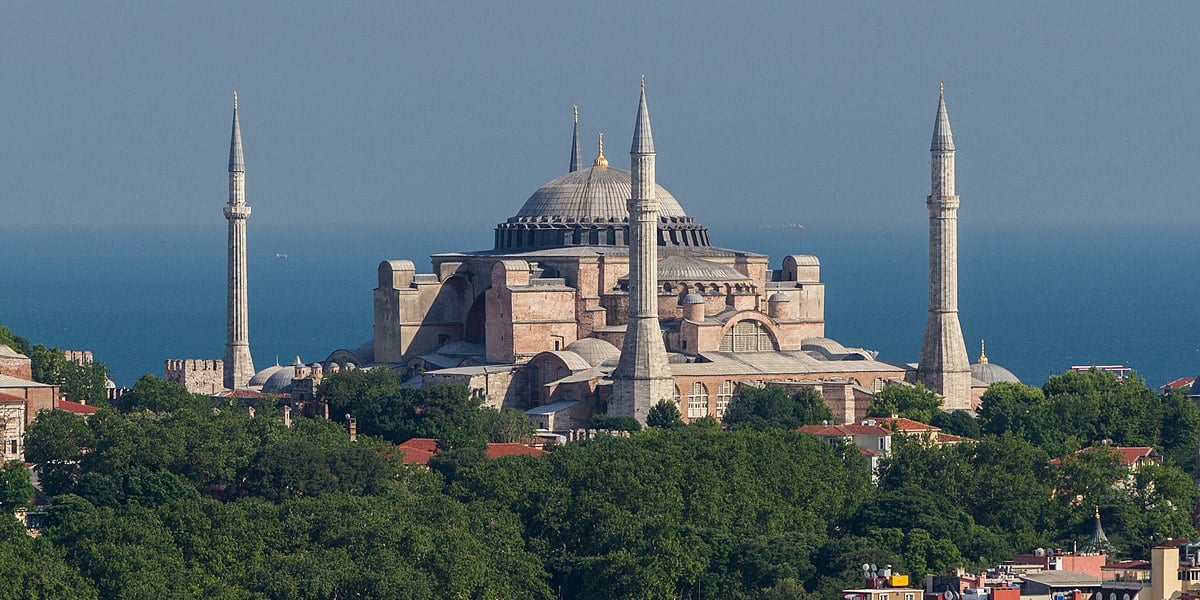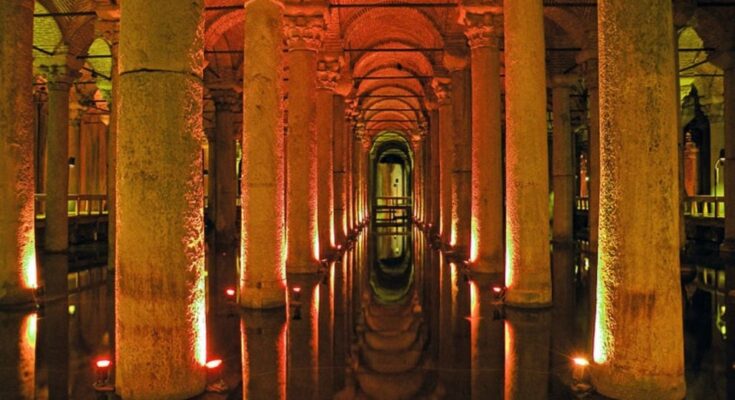
The ruins of Byzantine culture in Constantinople, now officially Istanbul, in modern day Turkey, serve as a reminder of the once-mighty Byzantine Empire.
The city hosts priceless treasures of the glory days of Byzantium, many of them intertwined in the urban fabric of the crowded metropolis.
Hagia Sophia, the epicenter of Greek Orthodox Christian worship in Constantinople, is, of course, the highlight of the city. In its monumental grandeur, its rich history remains almost untouched by recent changes.
Many Greek Orthodox churches were transformed into mosques after the fall of Constantinople in 1453. The same holds true of the emblematic Hagia Sophia, which was converted into a mosque only a few years ago.

There are several priceless remnants of the Byzantine Empire standing proudly to the test of time, many of them overshadowed by modern structures or now decrepit due to neglect and carelessness.
Among these are ruins of Byzantine palaces, remnants of columns, long intact pieces of what is left standing of the walls of forts, forums, and churches with minarets surrounding them. These in combination all create an unforgettable image.
Byzantine Palaces of Constantinople in today’s Istanbul
From the Roman era to the Byzantium period, the city has been home to a number of palaces that have gone through various transitions throughout the centuries. The Ottoman touch then brought further changes.
The Palace of Constantine VII Porphyrogenitus is one of them. It is a 13th century Byzantine palace in the northwestern part of the old city of the sprawling metropolis.
It was was constructed during the late 12th to early 13th centuries as part of the palace complex of Blachernae, where the Theodosian Walls meet with the walls of the suburb of Blachernae.
The palace was built long after Porphyrogenitus’ reign. In fact it was named after Constantine Palaiologos. It served as an imperial residence during the final years of the Byzantine Empire.
The Great Palace of Constantinople—also known as the Sacred Palace—was a large imperial Byzantine complex located on the southeastern end of the peninsula now known as Old Istanbul.

It served as the main imperial residence of the Eastern Roman or Byzantine emperors until 1081 and was the center of the imperial administration for over 690 years. Only a few remnants and fragments of its foundations have survived.
The palace of Antiochos was an early fifth century palace, identified with a palatial structure. It was excavated in the 1940s to 1950s close to the Hippodrome of Constantinople.
Some of the remains are still visible today. In the seventh century, a part of the palace was converted into the church of St. Euphemia in the Hippodrome.
There is very little left of the Palace of Lausos. It was situated beside the Hippodrome close to the Palace of Antiochos. Lausos was the grand chamberlain of the court of Emperor Theodosios II.

Stones and Columns
The Stone of Milion was built as a marker to measure distances across the Roman Empire. It was the mile zero point of the city. Initially, all roads may have led to Rome, but in Byzantine times, all roads led to Constantinople.
It is believed that it may have either been erected by Emperor Septimus Severus in the third century or Constantine the Great in the fourth century.
The tall honorific column of Constantine the Great, made of porphyry, stands in the middle of the old Forum of Constantine. Once, a statue of the emperor with a radiate crown stood at the top.
This column was built in 328 AD to commemorate the dedication of Constantinople on May 11, 330. The column is the oldest surviving Constantinian monument.

Other ruins of the Byzantines
There is little left of the Hippodrome of Constantinople, the place where the devastating Nika Riots started.
The hippodrome was the Colosseum of Constantinople, but instead of hosting gladiator fights, it was the location of the very popular Byzantines chariot races.
Today, only the Ancient Egyptian Obelisk of Thutmose III and the Serpent Column that once adorned the Hippodrome remain in place.
The Obelisk of Theodosius (Turkish: Dikilitaş) is the Ancient Egyptian obelisk of Pharaoh Thutmose III re-erected in the Hippodrome of Constantinople (known today as Sultanahmet Meydanı, in the modern city of Istanbul) by the Roman emperor Theodosius I in the 4th century AD. pic.twitter.com/ZMlX4NJyLF
— Cihancan (@Cihancansezgin) July 28, 2022
Around the old city, large parts of the imposing Theodosian Walls are still in place. Some have been restored, while others have been abandoned and lay in ruins. Built from 408 AD to 450 AD, they once deterred many enemies from even attempting to breach them.
The walls were almost impregnable and protected the city from prospective invaders for a whole millennium.

The Column of Marcianus is another column that continues to stand in the modern city, now Istanbul. About ten meters (29 feet) tall is a monument of Emperor Marcianos, who ruled in the middle of the fifth century.
Marcianos had condemned Nestorianism at the Fourth Ecumenical Council (451 in Chalcedon) and had repelled attacks on Syria and Egypt.
Finally, the Basilica Cisterns is another hidden treasure of Byzantine civilization. A subterranean structure under the Stoa Basilica that was commissioned by Emperor Justinian and built in 532.
Basilica Cistern of Constantinople: pic.twitter.com/VUWn3qTYeY
— Ghost of Hellas (@ghostofhellas) November 14, 2017
It is the largest surviving Byzantine cistern in İstanbul, a construction of 336 columns, many of which feature elaborate carved capitals. Its symmetry and grandeur of conception are quite amazing.




